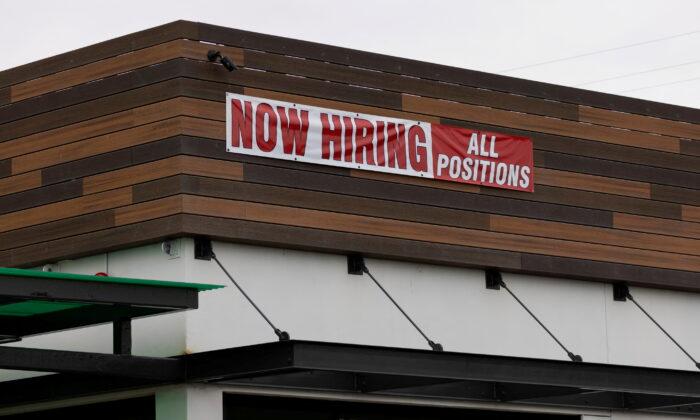Private sector employment growth in the United States declined in March when compared to February, according to data from the ADP National Employment Report published on March 30, as Americans continue quitting the workforce amid a tight labor market.
The goods-producing sector added 79,000 workers while service providers increased headcount by 377,000. Franchise businesses hired 11,200 workers during this period.
“Job growth was broad-based across sectors in March, contributing to the nearly 1.5 million jobs added for the first quarter in 2022,” said Nela Richardson, chief economist at ADP.
“Businesses are hiring, specifically among the service providers which had the most ground to make up due to early pandemic losses. However, a tight labor supply remains an obstacle for continued growth in consumer-facing industries.”
Leisure and hospitality added the highest number of workers, with 161,000 people joining the sector. Education and health services brought in 72,000 more employees, professional or business services 61,000, and manufacturing 54,000.
Companies employing between 50 and 499 people hired 188,000 workers, while those with 1,000+ employees added 118,000 workers. Small businesses with 1 to 19 workers only added 37,000 employees.
The U.S. Labor Department is due to publish the official government report on jobs this week. Though the ADP report has often been imperfect at predicting employment numbers, it has suggested the underlying trend in job growth.
Meanwhile, growth in corporate profits slowed down significantly during the fourth quarter, a recent Commerce Department report revealed, which could affect the pace of hiring. Corporate profits, adjusted for capital consumption and inventory valuation, rose by $96.9 billion during Q3. This fell to just $20.4 billion during Q4, with profit margins falling to 12.2 percent during this period.
“While still elevated by historic comparison, the decline in margins suggests the higher-cost environment is eating into profitability,” Jay Bryson, chief economist at Wells Fargo in Charlotte, North Carolina, told Reuters.
“With cost pressure remaining persistent and demand slowing, we expect margins to slow further this year as businesses find it increasingly difficult to pass costs onto consumers,” he said.





